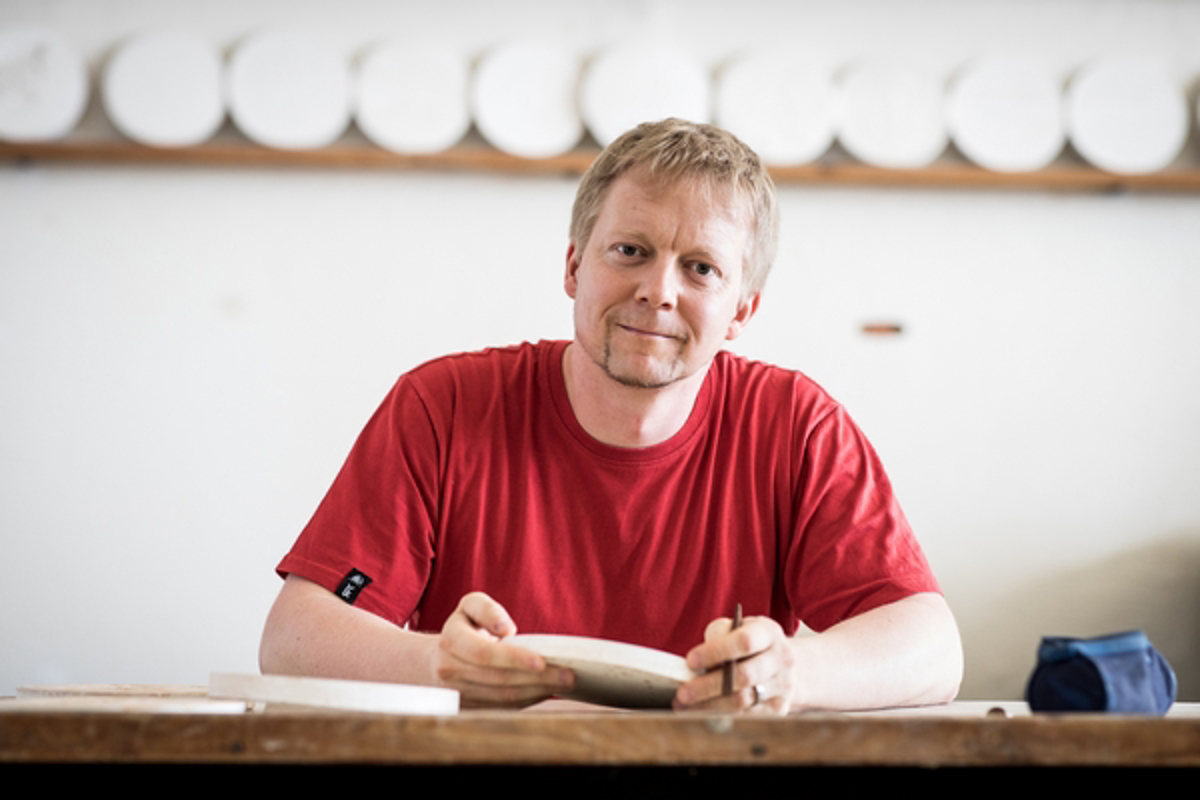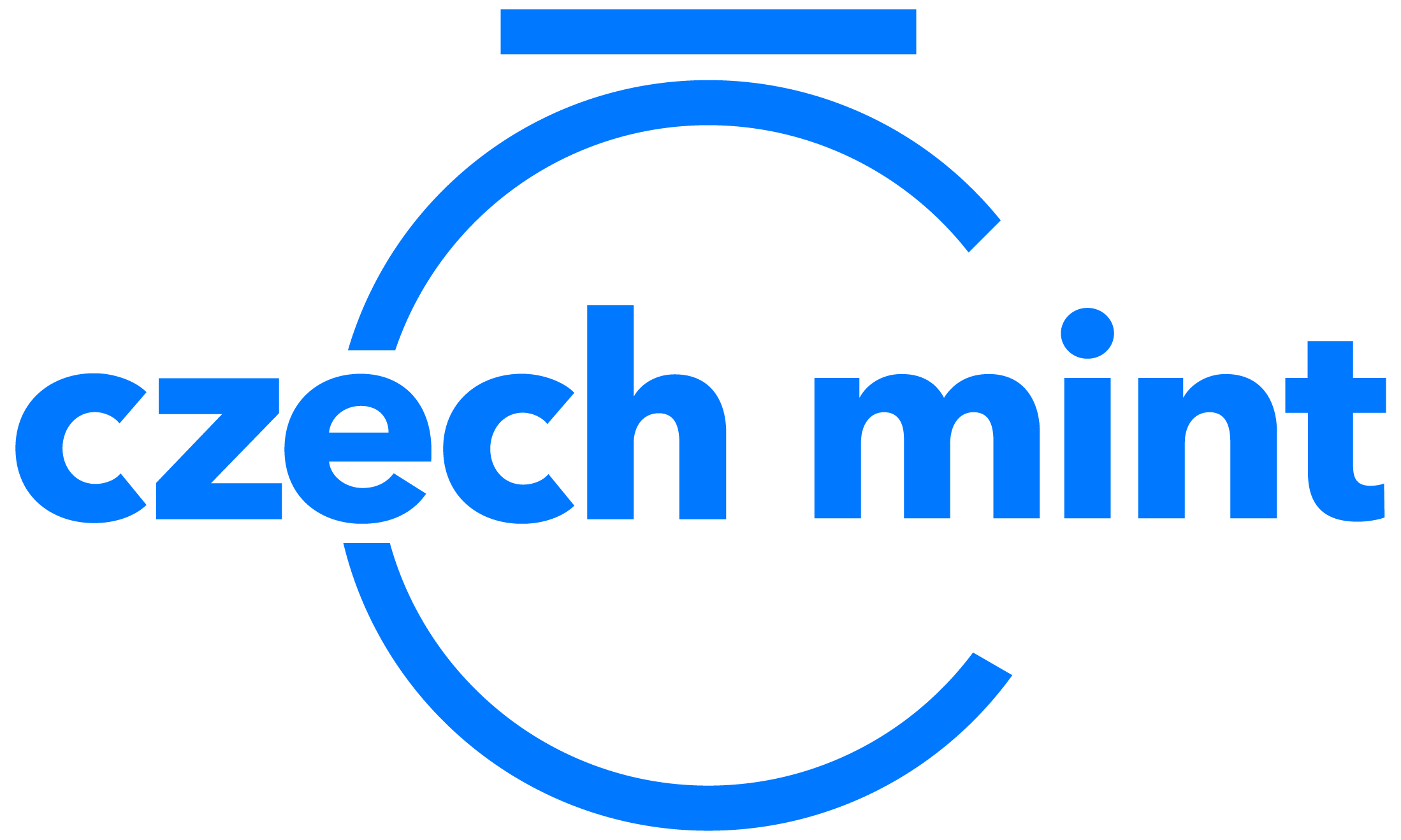MgA. Josef Oplištil
Your life is closely connected with the Art School in Jablonec nad Nisou. You were one of the first graduates of a medal higher vocational school and later you became a mentor of young artists. If you look at the possibilities of students' employment then and today, would you say that something has changed?
I remember how rare it was during my studies at higher vocational school when we, as students, met with a real job directly in the classroom. The only way the young medal maker could draw attention to himself or herself at that time was to participate in public tenders for commemorative coins announced by the Czech National Bank. Today, the situation is much simpler for the students of our school. Thanks to the Czech Mint, students are regularly given the opportunity to carry out real assignments during their studies, thus drawing attention of a potential employer or subsequently winning external contracts. I think that thanks to this cooperation, many of our students and graduates have found employment in the Czech Mint and in other companies.
You are known as a perfectionist at the Czech Mint. What do medal craft and art mean for you? Is it difficult to combine them with the profession of a teacher?
Yes, yes (laughs). I have to confirm self-critically that I am a perfectionist. I am most affected by this perfectionism at the moment when I think of a new artistic solution of the design of a coin or medal. At such a moment, I have an almost tunnel vision, when at the end of the tunnel there is the embodiment of this idea, for the successful completion of which I am willing to do much. For me, medal craft and fine arts in general are primarily about the realization of personal visions, a kind of non-verbal communication, where the addressee of all efforts is a sensitive and receptive viewer. Reconciling the artistic career with the career of the teacher is always about a certain compromise. Only time will tell how I have succeeded in this, and how well I am doing this would be appreciated by my students and graduates. But I'm afraid they would say about me that I am a perfectionist in this respect as well (laughs).
You are family based. Is it true that your wife is involved in some of your art designs?
My wife Lucie is always the first critic of any of my work. The look on her face when I present any of my work to her will tell me more than a thousand words. Then I know right away how well I was able to express my idea. But our cooperation does not end there. Over the years, Lucka has learned a number of operations and steps in the processing of a drawing design and a plaster model of a coin, so it sometimes resembles a manufactory at home. I think we are an effective team.
Your father worked in agriculture, so you didn't follow him. Would you like your children to follow in your footsteps?
Sometimes I answer a similar question so that my children are, of course, completely free to choose whether to be sculptors or painters (laughs). But seriously. My opinion is changing and I must say that I am shaped by my teaching experience. Sometimes at school I see a big difference between someone who is interested in medal making and someone who finds out it's not for him. Such a person then suffers in this field. That is why, above all, I want my children to do what they enjoy.
And what about your other children - students? Are you always proud to present their successes, for example in the Czech National Bank competitions, to the public, but is there no professional rivalry between you? Don't you perceive them as rivals?
The success of our students and graduates really pleases me and my colleagues and we are proud of them. I would say that it is very enriching for me to watch the work of students and graduates, the way of their artistic thinking and how they move and mature. And yes, I think there is a kind of rivalry between us. But it's such a friendly, healthy competition. Sometimes I think about who actually taught whom what.
You are the author of a number of imaginative realizations for the Czech National Bank, but your coins also enrich the portfolio of the Czech Mint. You prepared a four-part miniseries dedicated to the revolutionary years 1918, 1938, 1948 and 1968 in the jubilee year of 2018. Instead of period scenes, you chose the elegant symbolism of the changing Czech lion. Do you prefer abstract scenes, realistic modeling or does it depends on theme?
The actors say there are no small roles. I see this principle similarly and I apply it to medal making. This affects my approach to every topic. Any topic offers a chance for a valuable realization. Therefore, I do not even prefer any specific way of modeling - each theme first requires an idea, for which I then think about a suitable way of processing. Working on the miniseries Revolutionary Eight was a great challenge which required a depiction of the essence of four very complex periods in the history of our country. When I read the information about each event, it was clear that there were a different context and different circumstances. The common sign of these events, however, was that they all happened to our republic, which is a symbol of the lion. During the first hundred years of the republic, a lot happened to the Czech lion, and each of these events significantly affected and changed the Czech lion and its sovereignty. I hope that the result of my efforts clearly reflects these changes.
This year, the Czech Mint celebrated 25 years of existence. What would you wish it in the future?
The Czech Mint has come a long way during a quarter of a century and I think it should be rightfully proud of it. I wish the Czech Mint still many satisfied customers and many successful realizations of coins and medals. Personally, I will consider it an honor to be able to sign under certain realizations in the future.
2018

 čeština
čeština
 slovenčina
slovenčina
 english
english
